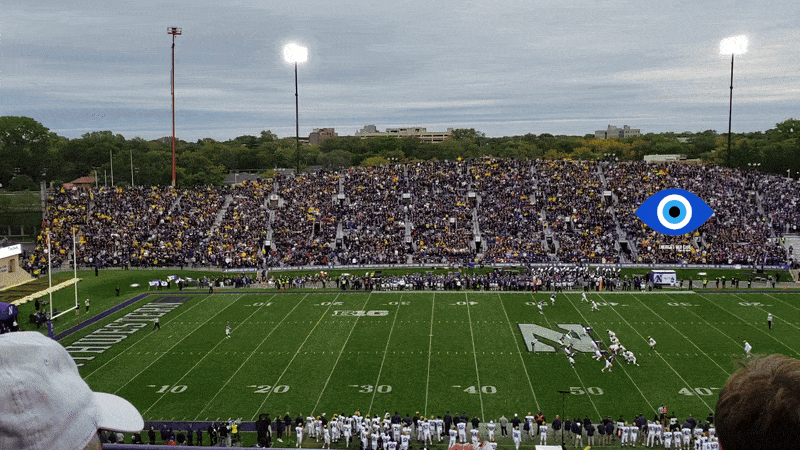Top Ten Things You Did Not Know About Your Images: Unveiling the Hidden Risks

Here are the top ten things you didn't know about your images, and why you should care.
1. Your Images Contain Hidden Metadata
Every time you snap a photo with your smartphone or digital camera, it automatically embeds metadata—also known as EXIF data—into the image file. This metadata can include details such as the date and time the photo was taken, the camera model, and even settings like aperture and ISO speed. While this information is useful for photographers, it can also be exploited if your images fall into the wrong hands.
2. GPS Coordinates Can Reveal Your Location
One of the most significant security concerns with image metadata is the inclusion of GPS coordinates. If location services are enabled on your device, your photos may contain precise geographical data pinpointing where the image was taken. This can be used to track your movements, identify your home, or locate frequently visited places—posing a serious risk if shared publicly or with untrusted parties.
3. Social Media Platforms Often Strip Metadata—But Not Always
Many social media platforms, like Facebook and Instagram, automatically strip metadata from images to protect users' privacy. However, not all platforms do this, and the metadata may still be accessible to the platform itself or third parties. Additionally, if you share photos via messaging apps or email, the metadata often remains intact, making it essential to remove sensitive information before sharing.
4. Reverse Image Search Can Trace Your Photos Back to You
Reverse image search engines, such as Google Images, allow anyone to upload a photo and find instances of it across the web. This means that even if you share a photo anonymously, it could be traced back to you if similar images or other identifying information is available online. This can be particularly concerning for images shared on forums, blogs, or other public platforms.
5. Image Manipulation Can Leave Digital Fingerprints
Editing photos doesn't necessarily erase their metadata. In fact, some image editors add their own metadata, indicating that the image has been modified. This can include software details, dates of modification, and even remnants of the original image. For forensic purposes, these digital fingerprints can be used to analyze the authenticity of a photo, but they also pose a privacy concern if you're unaware of their existence.
6. Embedded Thumbnails Can Expose the Original Image
Some image formats, particularly JPEG, store a small thumbnail of the original image within the file. Even if you crop or heavily edit the main image, the embedded thumbnail might still reflect the unaltered version. This hidden data can be extracted with the right tools, potentially exposing information you intended to conceal.
7. Photos Can Be Used for Triangulation
If you upload multiple photos taken in different locations, each with embedded GPS data, it's possible for someone to triangulate your routine or predict your future movements. By analyzing patterns, such as time and location data from several images, malicious actors can build a detailed profile of your habits and whereabouts, leading to potential security threats.
8. Your Camera Serial Number Is Embedded in Photos
Many cameras embed their unique serial number into the metadata of each photo they take. This information can be used to trace images back to the specific device that captured them. In scenarios where anonymity is crucial—such as photojournalism or whistleblowing—this seemingly innocuous data could compromise your identity.
9. Metadata Can Affect Your Search Engine Rankings
From an SEO perspective, the metadata in your images can influence how they are indexed by search engines. While some metadata, like descriptive tags and alt text, can boost your visibility, unnecessary or excessive metadata might have the opposite effect. Stripping out irrelevant data can help improve your website's performance and ensure that only the most pertinent information is used for SEO purposes.
10. Automatic Tagging Services Analyze Your Photos
Many cloud storage services, like Google Photos and Apple iCloud, offer automatic tagging and categorization of your images. These services use AI to recognize faces, objects, and scenes, making it easier to organize your photos. However, this also means that your images are being analyzed and categorized by algorithms, which could raise privacy concerns, especially if the service shares data with third parties.
Understanding the hidden risks associated with your images is crucial in an era where digital privacy is constantly under threat. By being aware of the metadata embedded in your photos, and taking steps to remove or manage it, you can significantly reduce your exposure to potential security breaches. Whether you're a casual photographer or a professional, safeguarding your images from unwanted intrusion is a necessary step toward protecting your digital footprint.
Before sharing your next photo, take a moment to strip out any unnecessary metadata, review privacy settings, and consider the potential implications of the data you're inadvertently sharing. Your privacy and security depend on it.
What's Your Reaction?





























_at_Hillsboro_Road_(Virginia_State_Route_690)_in_Hillsboro%2C_Loudoun_County%2C_Virginia.jpg/240px-thumbnail.jpg)












![Round One of 'Did You Know He Was...Whoite [sic]'](https://news.awc.ac/uploads/images/202409/image_430x256_66eb6319e5d76.jpg)















